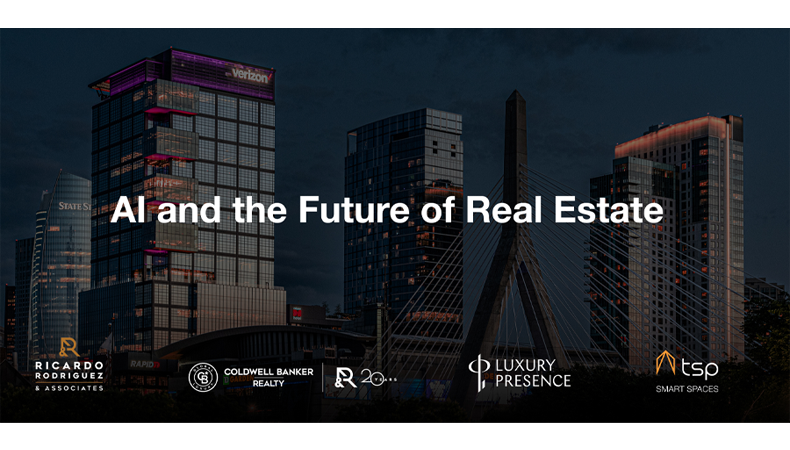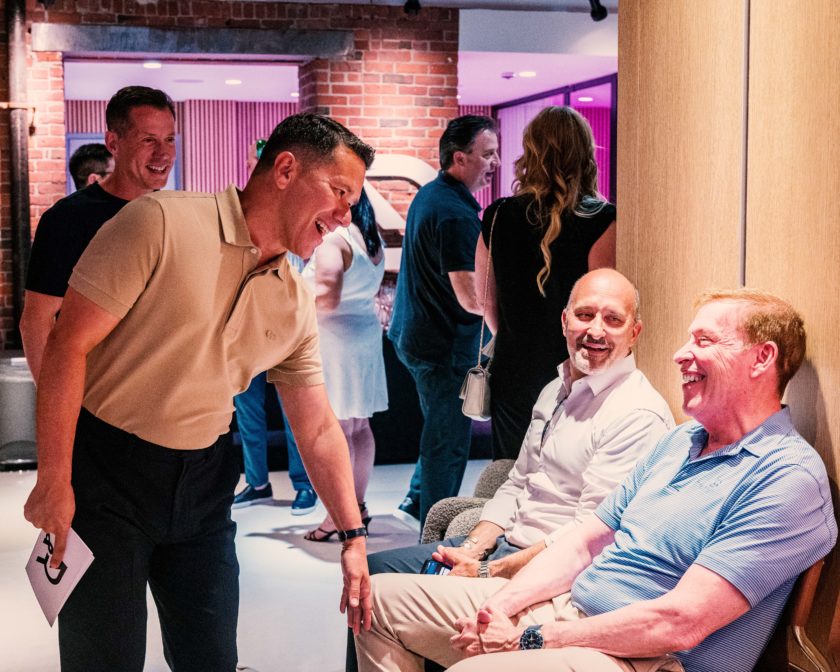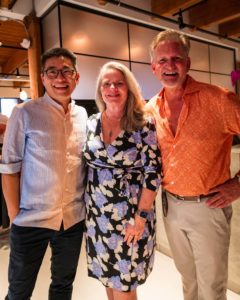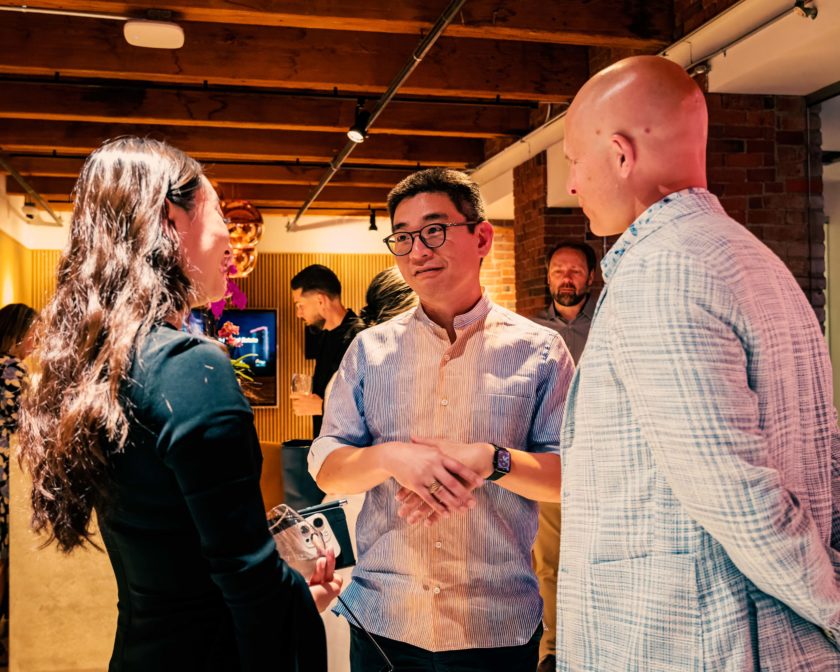From intern to game-changer: How AI is rewriting the rules of real estate and smart living

At TSP Smart Spaces in Boston, a packed room of real estate professionals, technologists, and design minds came together for a panel that might best be described as “AI 101 meets Architectural Digest.” Moderated by award-winning realtor and Principal of Ricardo Rodriguez & Associates, Ricardo Rodriguez, the event brought together Michael Oh (Founder & President of TSP Smart Spaces) and Jesse Pederson (CTO of Luxury Presence) for a wide-ranging, at times funny, and mind-expanding discussion about artificial intelligence and its transformative role in real estate, luxury homes, and the built environment.
“It’s not optional anymore.”
Ricardo set the tone early: AI isn’t something we can opt out of. It’s not social media. It’s more like electricity. Jesse took that one further, describing AI as a utility, not a novelty. “In 10 years,” he predicted, “we’ll take it for granted like Wi-Fi or plumbing.” And for his team of 100 engineers, that future is already here. AI has dramatically raised expectations. Productivity and creativity are now both supercharged.

Michael Oh echoed the sentiment but pulled back the curtain a bit: AI isn’t “intelligence” as we understand it. It’s pattern recognition on steroids. “It’s just really fast computing, but because it speaks and writes like us, we start to project sentience onto it.” In his work designing smart homes, AI is already acting like a business partner. It’s just one that never sleeps, doesn’t mind brainstorming endlessly, and occasionally surprises you with better answers than your human team.
Real estate in the age of AI: Smarter listings, sharper targeting
 As the conversation shifted into real estate, it became clear: the impact of AI is just beginning to ripple through the industry. From virtual staging to video editing to personalized outreach, the tools are evolving rapidly. And so are consumer expectations.
As the conversation shifted into real estate, it became clear: the impact of AI is just beginning to ripple through the industry. From virtual staging to video editing to personalized outreach, the tools are evolving rapidly. And so are consumer expectations.
Ricardo shared a story that could’ve been a headline: an AI-generated rendering, delivered in seconds, beat out the one from a professional renderer. Not only faster, it was better. Jesse weighed in: “If AI can help buyers visualize what a space could be, especially when most can’t imagine it themselves, then why not use it? Just be honest about it.”
Authenticity, they agreed, isn’t about rejecting AI. It’s about framing it correctly. “Tell the buyer: this is a concept. If you want purple walls, we can show you that too.”
The real AI revolution? It’s in the back office.
While the conversation naturally drifted toward smart homes that adjust themselves to your needs (think: your thermostat knows when you’re cold before you do), Michael made a sharp point: most of AI’s current power is in how the home is bought and sold. From CRMs that analyze conversations to hyper-personalized marketing strategies, AI is finally giving agents a leg up over massive portals like Zillow because it can understand relationships, not just square footage.
And with predictive pricing models now within 2% of actual sale prices, Jesse added, “You’d be wild not to run your numbers by AI.” The human instinct still matters, especially in luxury markets where comps are sparse, but the machines are catching up fast.
Smart homes, smarter buyers
 Michael offered a glimpse into the near-future home experience: intelligent voice assistants like Josh.ai that not only dim the lights but converse with you like a family member. But there’s a caveat. People want technology to be intuitive, not intrusive. “The moment a home surprises you, when it turns on something you didn’t expect, you start to feel like it’s not yours anymore,” he said. That trust, once broken, is hard to regain.
Michael offered a glimpse into the near-future home experience: intelligent voice assistants like Josh.ai that not only dim the lights but converse with you like a family member. But there’s a caveat. People want technology to be intuitive, not intrusive. “The moment a home surprises you, when it turns on something you didn’t expect, you start to feel like it’s not yours anymore,” he said. That trust, once broken, is hard to regain.
Still, personalization creates emotional resonance, and that can sell a house. Imagine a home that greets potential buyers with a tailored AI persona, preloaded to match their lifestyle or family needs. It’s not science fiction. It could be a marketing strategy that surprises you the next time you’re buying a home.
Tools to try right now
Both Michael and Jesse dropped some practical takeaways:
- ChatGPT (Paid version): Use GPT-4o for fast answers, but tap into “3.5” (the reasoning model) for deeper thinking. Jesse recommends running every business decision by it for a week.
- Voice Chat with AI: Michael demoed ChatGPT’s voice interface and called it “bonkers.” It remembers past conversations and responds in real time — like talking to a super helpful cousin who just happens to know everything.
- Runway ML / Pika / Luma / Pika Labs / Pleo / Sora (coming soon): For video editing and visuals, these generative tools are closing in on Hollywood quality.
- Veo (by Google): Upload an image, describe a surreal concept (e.g. “a dancing puppy on the moon”), and watch it happen. Great for kids or kid-at-heart creatives.
Looking Ahead: Hope, Hype, and the AI Crossroads
 As the evening wrapped, the conversation turned to the future, not just of smart homes and real estate, but of society itself. Jesse Pederson shared a now-famous quote from Dario Amodei, CEO of AI research company Anthropic, whose predictions have sparked both optimism and existential dread in equal measure.
As the evening wrapped, the conversation turned to the future, not just of smart homes and real estate, but of society itself. Jesse Pederson shared a now-famous quote from Dario Amodei, CEO of AI research company Anthropic, whose predictions have sparked both optimism and existential dread in equal measure.
According to Amodei, in the next 10 years, AI could:
- Cure all diseases
- Balance the U.S. federal budget
- Render 40 percent of current jobs obsolete
Those predictions might sound like TED Talk hyperbole, but they’re grounded in real momentum. As Axios reported in May, white-collar work—once thought immune to automation—is being reshaped at an unprecedented pace. Tools that once felt optional are now mandatory, and job descriptions are evolving almost monthly.
Amodei, speaking to the Observer earlier this year, took the long view even further. With AI’s accelerating influence in biotech and pharmaceutical research, he believes it may eventually double the human lifespan. That’s not science fiction. It’s a belief backed by growing investment and early breakthroughs in AI-assisted drug development, gene therapy modeling, and predictive diagnostics.
Jesse described this as a candy store moment for technologists, exhilarating and full of possibility, but not without consequence. His optimism is tempered by concern for the next generation. If AI is the world’s most tireless intern—working around the clock for pennies and never complaining—what happens to the entry-level workers who used to do that?
Michael Oh offered a thoughtful balance of hope and hesitation. The innovation is thrilling, especially for nimble companies willing to experiment and adapt. But he warned of cultural roadblocks, regulatory inertia, and the rise of what he called the “middle zone” of creative and technical work that AI will easily replicate. If your business sits in the center of the bell curve, not highly unique and not highly specialized, you should be paying attention. And you should start moving.

Final thought
As Jesse Pederson closed the session, he offered a quote that neatly captured the mood of the night:
“Remember: this is the worst AI will ever be.”



